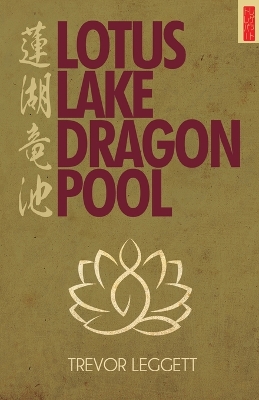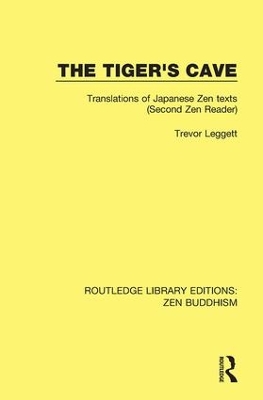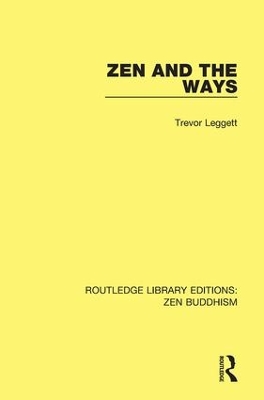Routledge Library Editions: Zen Buddhism
5 primary works
Book 2
This book, first published in 1982, collects a fascinating selection from the many traditional Japanese and Indian stories used by teachers in the Eastern spiritual schools to assist students in their training. The author, who spent many years training in both yoga and Zen, has collected the stories from a variety of sources: conversations with teachers, reminiscences in temple magazines of teachers of the past, folk tales used to make a training point, and personal experiences of training. The stories often relate to incidents from ordinary life: a monk in a Buddhist temple attacking another and how the abbot reacts; what an Indian judge, a yogin, says to a thief who pleads that what he did was the will of god; a magnificent new altar-cloth is donated, but never used; or an enthusiast for service sweeps the garden in the early morning while others stay in bed. These are incidents round which a student's doubts are likely to crystalize, and knowledge of them forms an important part of the background of a tradition.
The aim of the stories is to find realization and inspiration in daily life. They are ordinary, but the traditional presentation given by Trevor Leggett catches at the heart of an attentive reader and reveals something of the inner lines of the currents of life.
The book includes pictures specially brushed by Jacques Allais in what is called the Suiboku style. His work has been praised by the doyen of Japanese Suiboku painters, Nanpu Katayama. Suiboku is eighty percent suggestion: a Suiboku artist would not show both ends of a bridge, only one. The style gives a hint for the focusing of meditation practice, and thus provides a perfect complement to Trevor Leggett's text.
Book 3
Book 4
This book, first published in 1994, brings together the rich and complementary traditions of yoga and Zen. The lessons they contain serve always to guide and inform, never to lecture or preach. From accounts of long-ago kings and sages to stories of contemporary businessmen and students come timeless, universal precepts that speak directly to the modern reader.
Book 6
The Japanese texts translated here give a fascinating picture of actual Zen life – the life of the traditional temple training, with many stories and a number of historical incidents connected with Zen masters. The main text is the important commentary by a contemporary Soto Zen abbot on the Heart Sutra – the shortest and most difficult sutra in Mahayana Buddhism. Then comes a translation of the Yasen Kanna, a short autobiographical piece by Hakuin, the Japanese Zen teacher, monk and poet who revitalized Rinzai Zen in the eighteenth century. The remaining texts show what Zen means in Japan today.
Book 9
Expression of Zen inspiration in everyday activities such as writing or serving tea, and in knightly arts such as fencing, came to be highly regarded in the Japanese tradition. In the end some of them were practised as spiritual training as themselves; they were the n called ‘Ways’. This book, first published in 1978, includes translations of some rare texts on Zen and the Ways. One is a sixteenth-century Zen text complied from Kamakura temple records of the previous three centuries; others are translated from the ‘secret scrolls’ of fencing, archery, Judo and so on.




